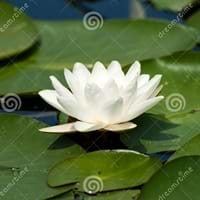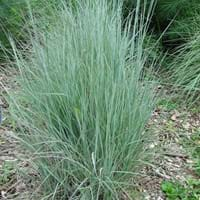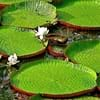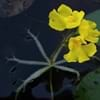Life Span
Perennial
Perennial
Origin
Europe, Russia/Siberia, Northern Africa, Asia
North America, United States, Canada
Types
Not Available
not available
Habitat
Ponds
Hillside, Prairies, Roadsides
USDA Hardiness Zone
5-9
2-7
Sunset Zone
21,22
1a, 1b, 2a, 2b, 3a, 3b, 4, 5, 6, 7, 8, 9, 10, 11, 12, 13, 14, 15, 16, 17, 18, 19, 20, 21, 22, 23, 24
Habit
Not Available
Upright/Erect
Minimum Height
Not Available
Minimum Width
Not Available
Flower Color
White, Yellow, Ivory
Not Available
Flower Color Modifier
Bicolor
Bicolor
Fruit Color
Green
Not Available
Leaf Color in Spring
Green, Dark Green
Blue Green, Gray Green
Leaf Color in Summer
Green, Dark Green
Light Green
Leaf Color in Fall
Green, Dark Green
Yellow, Red, Bronze, Orange Red
Leaf Color in Winter
Not Available
Tan, Bronze
Leaf Shape
Circular
Grass like
Plant Season
Spring, Summer
Summer, Fall, Winter
Sunlight
Full Sun, Partial Sun
Full Sun
Type of Soil
Loam, Sand
Loam, Sand
The pH of Soil
Neutral
Acidic, Neutral, Alkaline
Soil Drainage
Poorly Drained
Average
Bloom Time
Late Spring, Early Summer, Summer, Late Summer
Summer, Late Summer
Tolerances
Wet Site
Drought
Where to Plant?
In Water
Container, Ground, Pot
How to Plant?
Seedlings
Divison, Seedlings
Plant Maintenance
Medium
Low
Watering Requirements
Plant grows in water
Requires watering in the growing season
In Summer
Lots of watering
Lots of watering
In Spring
Moderate
Ample Water
In Winter
Average Water
Ample Water
Soil pH
Neutral
Acidic, Neutral, Alkaline
Soil Type
Loam, Sand
Loam, Sand
Soil Drainage Capacity
Poorly Drained
Average
Sun Exposure
Full Sun, Partial Sun
Full Sun
Pruning
Remove damaged leaves, Remove dead branches, Remove dead leaves
No pruning needed in the early stages, Remove damaged leaves, Remove dead branches, Remove dead leaves
Fertilizers
All-Purpose Liquid Fertilizer
No fertilizers needed
Pests and Diseases
Red blotch
fungus, Leaf spot
Plant Tolerance
Drought
Drought
Flowers
Showy
Insignificant
Flower Petal Number
Single
Single
Foliage Texture
Coarse
Fine
Foliage Sheen
Glossy
Matte
Allergy
Headache
Not Available
Aesthetic Uses
Showy Purposes
Not Used For Aesthetic Purpose
Beauty Benefits
Not Available
Not Available
Environmental Uses
Air purification
Erosion control, Wildlife
Medicinal Uses
Anaphrodisiac, Anodyne, Antiscrophulatic, Astringent
Not Available
Part of Plant Used
Root, Seeds
Whole plant
Other Uses
Not Available
Not Available
Used As Indoor Plant
No
No
Used As Outdoor Plant
Yes
Yes
Garden Design
Water Gardens
Dried Flower / Everlasting, Cutflower, Dried Flower/Everlasting, Groundcover, Mixed Border, Wildflower
Botanical Name
NYMPHAEA alba
SCHIZACHYRIUM scoparium
Common Name
European White Waterlily, Nenuphar, White Lotus
Little Bluestem
In Hindi
Nymphaea alba
little bluestem
In German
Weiße Seerose
wenig bluestem
In French
Nénuphar blanc
barbon
In Spanish
Nymphaea alba
Poco bluestem
In Greek
Nymphaea alba
Μικρή bluestem
In Portuguese
Nymphaea alba
pouco bluestem
In Polish
Grzybienie białe
trochę bluestem
In Latin
Nymphaea alba
parum bluestem
Phylum
Vascular plant
Magnoliophyta
Class
Magnoliopsida
Liliopsida
Order
Nymphaeales
Cyperales
Family
Nymphaeaceae
Poaceae
Genus
Nymphaea
Schizachyrium
Clade
Angiosperms
Angiosperms, Commelinids, Monocots
Tribe
Not Available
Andropogoneae
Subfamily
Cassidinae
Panicoideae
Number of Species
Not Available
Not Available
Difference Between Nymphaea Alba and Little Bluestem
If you are confused whether Nymphaea Alba or Little Bluestem are same, here are some features about those plants to help you choose better. Many people think that these two plants have the same characteristics, but one can see Nymphaea Alba and Little Bluestem Information and learn more about it. Fertilizers required for proper growth of Nymphaea Alba are All-Purpose Liquid Fertilizer, whereas for Little Bluestem fertilizers required are No fertilizers needed. Hence, one should know the basic difference between Nymphaea Alba and Little Bluestem if you are planning to have them in your garden to enhance its beauty.
<
Flowering PlantsImportance of Nymphaea Alba and Little Bluestem
Want to have the most appropriate plant for your garden? You might want to know the importance of Nymphaea Alba and Little Bluestem. Basically, these two plants vary in many aspects. Compare Nymphaea Alba and Little Bluestem as they differ in many characteristics such as their life, care, benefits, facts, etc. Every gardener must at least have the slightest clue about the plants he wants to plant in his garden. Compare their benefits, which differ in many ways like facts and uses. The medicinal use of Nymphaea Alba is Anaphrodisiac, Anodyne, Antiscrophulatic and Astringent whereas of Little Bluestem is Not Available. Nymphaea Alba has beauty benefits as follows: Not Available while Little Bluestem has beauty benefits as follows: Not Available.
Compare Facts of Nymphaea Alba vs Little Bluestem
How to choose the best garden plant for your garden depending upon its facts? Here garden plant comparison will help you to solve this query. Compare the facts of Nymphaea Alba vs Little Bluestem and know which one to choose. As garden plants have benefits and other uses, allergy is also a major drawback of plants for some people. Allergic reactions of Nymphaea Alba are Headache whereas of Little Bluestem have Not Available respectively. Having a fruit bearing plant in your garden can be a plus point of your garden. Nymphaea Alba has no showy fruits and Little Bluestem has showy fruits. Also Nymphaea Alba is not flowering and Little Bluestem is not flowering . You can compare Nymphaea Alba and Little Bluestem facts and facts of other plants too.





